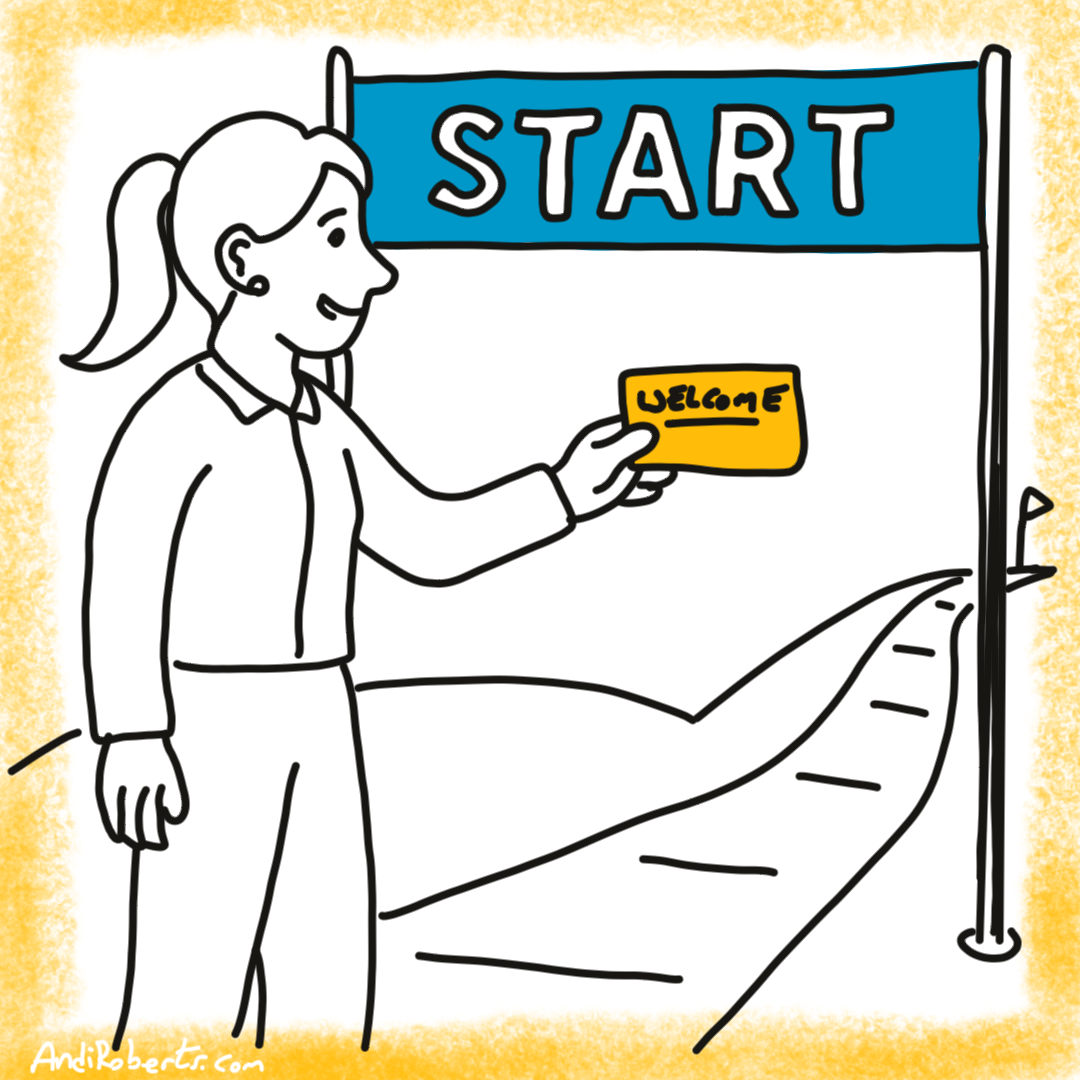Meetings often falter not because of the content of the conversation, but because no one is sure who gets to decide. We gather, we talk, and then we wonder: was that just a discussion, or did a decision happen? Leadership is not only about the quality of the choices made, it is also about creating clarity and trust around how those choices come into being.
Unclear decision rights create confusion and sap energy. When people do not know whether their role is to give input, to decide, or simply to listen, frustration grows. When the process is clear, even difficult decisions feel more honest. Clarity about decision rights is less about control and more about respect. It is a way of saying: your time matters, your voice matters, and here is how we will use them.
Five approaches to decision-making
1 – Autocratic
One person makes the decision without consulting others.
• Strengths: Speed, clarity, decisive action in crises
• Risks: Excludes input, reduces buy-in, may miss key information
There are moments when a single voice needs to decide. A crisis, a safety risk, a call that cannot wait. Used sparingly, this approach can reassure others that someone is willing to hold responsibility. But when it is overused, it erodes initiative and tells the group that their contribution is secondary. The invitation for leaders is to recognise when urgency truly requires it, and when it is simply a habit born of comfort or fear.
2 – Democratic
The group votes, and the option with the most votes wins.
• Strengths: Fair, transparent, fast in larger groups
• Risks: Can split the team, majority may silence minority voices
Voting can bring fairness and legitimacy. Everyone has a voice, and the outcome is clear. Yet democracy can leave behind those who voted differently, and with them the wisdom they carry. It takes leadership to frame voting not as an end, but as part of a process that includes listening. Democracy is strongest when it acknowledges difference, not when it hides it.
3 – Consensus
The team discusses until everyone fully agrees.
• Strengths: Builds alignment, commitment, and psychological safety
• Risks: Time-consuming, can lead to lowest-common-denominator decisions
Consensus is about belonging. It invites each voice to shape the whole until a shared “yes” emerges. The gift of consensus is deep commitment, yet its shadow is delay or diluted decisions. The role of the leader is not to let consensus drift forever, but to hold the container where honesty and compromise can meet. Consensus is not perfection, it is shared responsibility.
4 – Consent
A decision moves forward unless someone has a strong objection.
• Strengths: Enables progress while protecting against critical errors
• Risks: Requires trust and discipline; objections must be genuine
Consent assumes most decisions are experiments, safe enough to try and easy enough to adjust. It protects against real harm without demanding total agreement. What matters is the culture: people must object only when truly necessary, and silence must mean presence, not withdrawal. In such an environment, consent becomes a practice of trust, forward motion, and humility.
5 – Advice process
One person makes the decision but first consults relevant people for input.
• Strengths: Balances autonomy with inclusivity, efficient while informed
• Risks: Relies on the judgment of the decision-maker to seek the right advice
The advice process blends accountability with community. The decision-maker remains responsible, but wisdom is drawn from those who know and those who are affected. It works when advice is sought openly and listened to with sincerity. It falters when advice is token or selective. Done well, it honours both the individual and the collective, and produces decisions that feel both owned and legitimate.
Practical invitations for leaders
State decision rights upfront: To name how a decision will be made is to extend respect. People want to know if they are being asked to give input, to help choose, or to carry ownership of the final call. Without that clarity, frustration fills the room. The invitation is to begin each conversation with honesty: here is the role you play, here is how we will decide together.
Differentiate between discussion and decision: Many groups spend time in endless loops of conversation because no one says whether we are still exploring or are ready to decide. The gift of leadership is to name the stage we are in. When we are exploring, curiosity matters most. When we are deciding, courage matters most. Distinguishing the two protects people from wasting energy and helps them know what is being asked of them in the moment.
Respect the chosen process: Once you declare how a decision will be made, the group is watching to see if you honour your word. To change midstream is to teach that process does not matter. Keeping faith with what you declared is less about efficiency and more about trust. It is a way of saying, I will not pull the rug from under you.
Build decision-making literacy: Teams become free when they have language to name their choices. When people understand the difference between autocracy, democracy, consensus, consent, and advice, they can shape their conversations with intention rather than habit. Literacy creates agency. It allows the group to say, this time we need speed, or this time we need commitment. Sharing this knowledge is not a technique; it is a gift of participation.
Match the style to the stakes: Every decision does not need the same weight. What matters is discernment. Trivial matters can be decided quickly, and no one will feel cheated. Matters that touch identity, values, or long-term direction deserve more inclusive forms. The leader’s role is to pause and ask: what is at stake here, and therefore what style of decision honours it best?
Experiment with hybrid approaches: Life rarely fits neat categories. Sometimes we need to begin with advice, narrow with a vote, and then confirm by consent. There is no formula, only choices that balance speed with inclusivity. The invitation is to be transparent about how you weave the methods, so people do not feel manipulated. Experiment openly, and the group will learn with you.
Name a decision driver: Groups often drift when no one is explicitly holding the thread of decisions. A decision driver is not the boss, but a servant to the process. Their role is to surface the moment when a choice must be made, to help the group name it clearly, and to write it down so it does not dissolve into memory or confusion. This role shows up in different ways: in project management, the DACI model describes a “driver” who convenes contributors and tracks progress; in systemic team coaching, it is the delegated role of asking, “what is the decision here, and who owns it?” However it is framed, inviting someone to act as decision driver honours the group’s time, ensures clarity, and turns conversation into accountability.
Debrief decisions afterwards: Decisions are not the end; they are part of a larger conversation. Pausing to ask, did this process work for us, did we feel heard, and was the outcome what we needed, creates learning for the future. It shifts the focus from blame or pride to shared reflection. Debriefing is an act of humility, a willingness to learn not only about the content of the decision but about how we are together.
Record and review decisions: What is not written down is easily forgotten, and what is not revisited becomes lost experience. Recording decisions is about stewardship. It says, this matters enough to be remembered. Reviewing decisions later is about learning. It asks, did we choose well, did our assumptions hold, and what do we carry forward? The act of recording and reviewing is less about control and more about building memory and accountability in the community.
Further explorations
Decide & Deliver: 5 Steps to Breakthrough Performance in Your Organization by Marcia Blenko, Michael Mankins, and Paul Rogers: This Bain & Company book focuses explicitly on decision effectiveness as a driver of performance. It introduces a framework for identifying the most critical decisions, clarifying decision rights, and ensuring that meetings lead to action rather than ambiguity.
The Secret of Effective Meetings by Al Pittampalli: Pittampalli makes the case that the central purpose of a meeting is to make and confirm decisions. He emphasises preparation, clarity of decision rights, and bold leadership in ensuring that meetings don’t drift into endless discussion but instead produce clear commitments.
Decisive: How to Make Better Choices in Life and Work by Chip Heath and Dan Heath: While not only about meetings, this book dives deep into decision-making traps and offers practical tools for groups and leaders. Its insights into widening options, testing assumptions, and preparing for dissent are directly applicable to making better, more durable decisions in meetings.
Conclusion
Decision rights are not just about efficiency or speed. They are about how we belong to one another in the act of choosing. Each time a leader names who decides and how, they are shaping a culture of trust or of doubt. Clarity is not control, it is a form of respect.
To decide together is to create a future together. When I invite others into the process, I am saying their presence matters, that they are not simply observers of leadership but participants in it. When I withhold clarity, I leave people uncertain about their place, and the meeting becomes one more ritual of disengagement.
The deeper work of leadership is not simply to make good decisions, but to create conditions where decisions become a practice of accountability and belonging. The way we decide is the way we live together.
Three questions for reflection
1. When do I withhold clarity because I fear losing control?
2. How do my decision-making habits shape the sense of belonging in my team?
3. What would change if I treated every decision as an opportunity to build trust?
Do you have any tips or advice? What has worked for you? Do you have any recommended resources to explore? Thanks for reading!





Leave A Comment